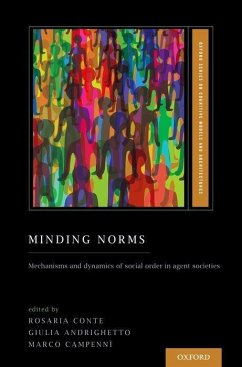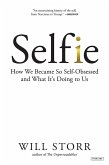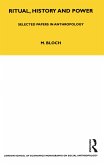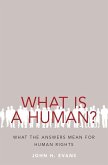Minding Norms
Mechanisms and Dynamics of Social Order in Agent Societies
Herausgeber: Conte, Rosaria; Campenni, Marco; Andrighetto, Giulia
Minding Norms
Mechanisms and Dynamics of Social Order in Agent Societies
Herausgeber: Conte, Rosaria; Campenni, Marco; Andrighetto, Giulia
- Gebundenes Buch
- Merkliste
- Auf die Merkliste
- Bewerten Bewerten
- Teilen
- Produkt teilen
- Produkterinnerung
- Produkterinnerung
This volume presents an unprecedented attempt to illustrate via agent based simulation the emergence of norms meant as prescribed conducts applied by the majority. The simulated scenarios are populated with cognitive agents generating norms by detecting and deciding to respect them.
Andere Kunden interessierten sich auch für
![Selfie Selfie]() Will StorrSelfie24,99 €
Will StorrSelfie24,99 €![Global Norms and Local Courts Global Norms and Local Courts]() Tobias BergerGlobal Norms and Local Courts115,99 €
Tobias BergerGlobal Norms and Local Courts115,99 €![Ritual, History and Power Ritual, History and Power]() Maurice BlochRitual, History and Power170,99 €
Maurice BlochRitual, History and Power170,99 €![Norms in a Wired World Norms in a Wired World]() Steven A. HetcherNorms in a Wired World101,99 €
Steven A. HetcherNorms in a Wired World101,99 €![Political Institutions and Practical Wisdom Political Institutions and Practical Wisdom]() Maxwell A CameronPolitical Institutions and Practical Wisdom103,99 €
Maxwell A CameronPolitical Institutions and Practical Wisdom103,99 €![A Troubled Sleep A Troubled Sleep]() James WallerA Troubled Sleep49,99 €
James WallerA Troubled Sleep49,99 €![What Is a Human? What Is a Human?]() John H EvansWhat Is a Human?66,99 €
John H EvansWhat Is a Human?66,99 €-
-
-
This volume presents an unprecedented attempt to illustrate via agent based simulation the emergence of norms meant as prescribed conducts applied by the majority. The simulated scenarios are populated with cognitive agents generating norms by detecting and deciding to respect them.
Hinweis: Dieser Artikel kann nur an eine deutsche Lieferadresse ausgeliefert werden.
Hinweis: Dieser Artikel kann nur an eine deutsche Lieferadresse ausgeliefert werden.
Produktdetails
- Produktdetails
- Verlag: Oxford University Press
- Seitenzahl: 208
- Erscheinungstermin: 25. Oktober 2013
- Englisch
- Abmessung: 236mm x 157mm x 20mm
- Gewicht: 476g
- ISBN-13: 9780199812677
- ISBN-10: 0199812675
- Artikelnr.: 38394193
- Herstellerkennzeichnung
- Libri GmbH
- Europaallee 1
- 36244 Bad Hersfeld
- gpsr@libri.de
- Verlag: Oxford University Press
- Seitenzahl: 208
- Erscheinungstermin: 25. Oktober 2013
- Englisch
- Abmessung: 236mm x 157mm x 20mm
- Gewicht: 476g
- ISBN-13: 9780199812677
- ISBN-10: 0199812675
- Artikelnr.: 38394193
- Herstellerkennzeichnung
- Libri GmbH
- Europaallee 1
- 36244 Bad Hersfeld
- gpsr@libri.de
Rosaria Conte is Director, LABSS (Laboratory of Agent Based Social Simulation) at the Institute of Cognitive Science and Technology of the National Research Council (NRC), Rome. Giulia Andrighetto is a researcher at the Institute of Cognitive Sciences and Technologies (ISTC-CNR) in Rome and at the European University Institute in Florence, Italy Marco Campennì is a postdoctoral researcher at Max Planck Institute for Evolutionary Anthropology in Leipzig, Germany
* Introduction
* 1.1 Why a new book on norms
* 1.2 Why a book on cognition
* 1.3 Our perspective and approach
* 1.4 Presentation of the volume and questions addressed
* 1.5 How to read the volume
* 1.6 Acknowledgements
* 1.7 References
* Loops in Social Dynamics
* Chapter 2
* 2.1 Introduction
* 2.2 The Way Up: Emergence
* 2.3 The Way Back: Downward Causation
* 2.3.1 Simple loop
* 2.3.2 Complex loop (Incorporation)
* 2.3.2.1 Second Order Emergence
* 2.3.2.2 Immergence
* 2.4 Advantages of the Present Approach
* 2.5 Concluding Remarks
* 2.6 References
* Agent Based Social Simulation and its necessity for understanding
socially embedded phenomena
* Chapter 3
* 3.1 Cognitive Simulation Modelling
* 3.2 Agent Based Architectures and Frameworks
* 3.3 The Social Intelligence Hypothesis
* 3.4 Social Embeddedness
* 3.5 Micro-Macro Complexity
* 3.6 Types of Social Simulation
* 3.7 Linking Plausible Theory and Observed Evidence
* 3.8 Relevance vs. Generality in Simulation
* 3.9 Emergence and Immergence in Simulations
* 3.10 Conclusion
* References
* How are norms brought about? A state of the art
* Chapter 4
* 4.1 Norms between conventions and legal norms
* 4.2 The game theoretical framework of simulating norms
* 4.3 The cognitive method of modelling norms
* 4.3.1 Analysis
* 4.4 Norms in current architectures
* 4.4.1 Normative modules
* 4.4.2 Norm conflicts
* 4.4.3 Concepts of norms
* 4.4.4 Drawbacks of cognitive architectures
* 4.5 Results and unresolved questions
* References
* 5.1 Introduction and motivation
* 5.2 Interaction structure and specialization
* 5.3 The structure: Local groups and a central market
* 5.4 Matching agents
* 5.5 Learning
* 5.7 The evolution of trust and division of labor - some first
simulation studies
* References
* Norms' Dynamics as a Complex Loop
* Chapter 6
* 6.1 Normative Prescriptions
* 6.2 The missing link in the formal treatment of obligations
* 6.3 The mental dynamics of norms
* 6.3.1 Norm recognition
* 6.3.2 Norm adoption
* 6.3.3 Norm compliance
* 6.4 Concluding Remarks
* References
* Hunting for norms in unpredictable societies
* Chapter 7
* 7.1 Introduction
* 7.2 Related Work
* 7.3 The Norm Recognition Module
* 7.4 Norm Detectives Vs. Social Conformers
* 7.4.1 Results of comparison
* 7.5 Norm Detectives in a segregated world
* 7.5.1 Effects of segregation
* 7.6 Concluding remarks
* References
* The derivation of EMIL-S from EMIL-A: From cognitive architecture to
software architecture
* Chapter 8
* 8.1 General Requirements of a Multi-Agent Simulation System with
Normative Agents
* 8.2 System Architecture
* 8.3 EMIL-S
* 8.4 Overview of the cognitive and normative architecture of EMIL-A
* 8.5 Correspondence between EMIL-S and EMIL-A
* 8.6 Differences between the cognitive and the implemented model
* 8.7 Additional assumptions about cognitive processes used in EMIL-S
* References
* Demonstrating the Theory: The case of Wikipedia
* Chapter 9
* 9.1 Empirical background
* 9.2 The Case: Wikipedia
* 9.2.1 Social Self-Regulation in Wikipedia
* 9.2.2 Methodology
* 9.2.3 Results
* 9.2.4 Discussion, Conclusions and Ideas for Further Empirical
Research
* 9.3 Designing the Wikipedia Simulation
* 9.4 Simulation runs and results
* 9.5 Conclusion: Comparison between the NetLogo prototype and the
EMIL-S/Repast version
* References
* The Role of Norm Internalizers in Mixed Populations
* Chapter 10
* 10.1 Introduction
* 10.2 Related Work
* 10.3 A multi-step and flexible model of norm internalization
* 10.4 Factors affecting internalization
* 10.5 Internalizer: the EMIL-I-A architecture
* 10.6 Simulating a social dilemma
* 10.6.1 Experimental Design
* 10.6.2 Experimental Results
* 10.7. Conclusions
* References
* Summary and Conclusions
* 11.1 Summary
* 11.2 Conclusions
* 11.2.1 What are norms
* 11.2.2 How norms emerge
* 10.2.3 How much mental complexity is needed
* 11.4 Balance and open questions
* 11.5 References
* 1.1 Why a new book on norms
* 1.2 Why a book on cognition
* 1.3 Our perspective and approach
* 1.4 Presentation of the volume and questions addressed
* 1.5 How to read the volume
* 1.6 Acknowledgements
* 1.7 References
* Loops in Social Dynamics
* Chapter 2
* 2.1 Introduction
* 2.2 The Way Up: Emergence
* 2.3 The Way Back: Downward Causation
* 2.3.1 Simple loop
* 2.3.2 Complex loop (Incorporation)
* 2.3.2.1 Second Order Emergence
* 2.3.2.2 Immergence
* 2.4 Advantages of the Present Approach
* 2.5 Concluding Remarks
* 2.6 References
* Agent Based Social Simulation and its necessity for understanding
socially embedded phenomena
* Chapter 3
* 3.1 Cognitive Simulation Modelling
* 3.2 Agent Based Architectures and Frameworks
* 3.3 The Social Intelligence Hypothesis
* 3.4 Social Embeddedness
* 3.5 Micro-Macro Complexity
* 3.6 Types of Social Simulation
* 3.7 Linking Plausible Theory and Observed Evidence
* 3.8 Relevance vs. Generality in Simulation
* 3.9 Emergence and Immergence in Simulations
* 3.10 Conclusion
* References
* How are norms brought about? A state of the art
* Chapter 4
* 4.1 Norms between conventions and legal norms
* 4.2 The game theoretical framework of simulating norms
* 4.3 The cognitive method of modelling norms
* 4.3.1 Analysis
* 4.4 Norms in current architectures
* 4.4.1 Normative modules
* 4.4.2 Norm conflicts
* 4.4.3 Concepts of norms
* 4.4.4 Drawbacks of cognitive architectures
* 4.5 Results and unresolved questions
* References
* 5.1 Introduction and motivation
* 5.2 Interaction structure and specialization
* 5.3 The structure: Local groups and a central market
* 5.4 Matching agents
* 5.5 Learning
* 5.7 The evolution of trust and division of labor - some first
simulation studies
* References
* Norms' Dynamics as a Complex Loop
* Chapter 6
* 6.1 Normative Prescriptions
* 6.2 The missing link in the formal treatment of obligations
* 6.3 The mental dynamics of norms
* 6.3.1 Norm recognition
* 6.3.2 Norm adoption
* 6.3.3 Norm compliance
* 6.4 Concluding Remarks
* References
* Hunting for norms in unpredictable societies
* Chapter 7
* 7.1 Introduction
* 7.2 Related Work
* 7.3 The Norm Recognition Module
* 7.4 Norm Detectives Vs. Social Conformers
* 7.4.1 Results of comparison
* 7.5 Norm Detectives in a segregated world
* 7.5.1 Effects of segregation
* 7.6 Concluding remarks
* References
* The derivation of EMIL-S from EMIL-A: From cognitive architecture to
software architecture
* Chapter 8
* 8.1 General Requirements of a Multi-Agent Simulation System with
Normative Agents
* 8.2 System Architecture
* 8.3 EMIL-S
* 8.4 Overview of the cognitive and normative architecture of EMIL-A
* 8.5 Correspondence between EMIL-S and EMIL-A
* 8.6 Differences between the cognitive and the implemented model
* 8.7 Additional assumptions about cognitive processes used in EMIL-S
* References
* Demonstrating the Theory: The case of Wikipedia
* Chapter 9
* 9.1 Empirical background
* 9.2 The Case: Wikipedia
* 9.2.1 Social Self-Regulation in Wikipedia
* 9.2.2 Methodology
* 9.2.3 Results
* 9.2.4 Discussion, Conclusions and Ideas for Further Empirical
Research
* 9.3 Designing the Wikipedia Simulation
* 9.4 Simulation runs and results
* 9.5 Conclusion: Comparison between the NetLogo prototype and the
EMIL-S/Repast version
* References
* The Role of Norm Internalizers in Mixed Populations
* Chapter 10
* 10.1 Introduction
* 10.2 Related Work
* 10.3 A multi-step and flexible model of norm internalization
* 10.4 Factors affecting internalization
* 10.5 Internalizer: the EMIL-I-A architecture
* 10.6 Simulating a social dilemma
* 10.6.1 Experimental Design
* 10.6.2 Experimental Results
* 10.7. Conclusions
* References
* Summary and Conclusions
* 11.1 Summary
* 11.2 Conclusions
* 11.2.1 What are norms
* 11.2.2 How norms emerge
* 10.2.3 How much mental complexity is needed
* 11.4 Balance and open questions
* 11.5 References
* Introduction
* 1.1 Why a new book on norms
* 1.2 Why a book on cognition
* 1.3 Our perspective and approach
* 1.4 Presentation of the volume and questions addressed
* 1.5 How to read the volume
* 1.6 Acknowledgements
* 1.7 References
* Loops in Social Dynamics
* Chapter 2
* 2.1 Introduction
* 2.2 The Way Up: Emergence
* 2.3 The Way Back: Downward Causation
* 2.3.1 Simple loop
* 2.3.2 Complex loop (Incorporation)
* 2.3.2.1 Second Order Emergence
* 2.3.2.2 Immergence
* 2.4 Advantages of the Present Approach
* 2.5 Concluding Remarks
* 2.6 References
* Agent Based Social Simulation and its necessity for understanding
socially embedded phenomena
* Chapter 3
* 3.1 Cognitive Simulation Modelling
* 3.2 Agent Based Architectures and Frameworks
* 3.3 The Social Intelligence Hypothesis
* 3.4 Social Embeddedness
* 3.5 Micro-Macro Complexity
* 3.6 Types of Social Simulation
* 3.7 Linking Plausible Theory and Observed Evidence
* 3.8 Relevance vs. Generality in Simulation
* 3.9 Emergence and Immergence in Simulations
* 3.10 Conclusion
* References
* How are norms brought about? A state of the art
* Chapter 4
* 4.1 Norms between conventions and legal norms
* 4.2 The game theoretical framework of simulating norms
* 4.3 The cognitive method of modelling norms
* 4.3.1 Analysis
* 4.4 Norms in current architectures
* 4.4.1 Normative modules
* 4.4.2 Norm conflicts
* 4.4.3 Concepts of norms
* 4.4.4 Drawbacks of cognitive architectures
* 4.5 Results and unresolved questions
* References
* 5.1 Introduction and motivation
* 5.2 Interaction structure and specialization
* 5.3 The structure: Local groups and a central market
* 5.4 Matching agents
* 5.5 Learning
* 5.7 The evolution of trust and division of labor - some first
simulation studies
* References
* Norms' Dynamics as a Complex Loop
* Chapter 6
* 6.1 Normative Prescriptions
* 6.2 The missing link in the formal treatment of obligations
* 6.3 The mental dynamics of norms
* 6.3.1 Norm recognition
* 6.3.2 Norm adoption
* 6.3.3 Norm compliance
* 6.4 Concluding Remarks
* References
* Hunting for norms in unpredictable societies
* Chapter 7
* 7.1 Introduction
* 7.2 Related Work
* 7.3 The Norm Recognition Module
* 7.4 Norm Detectives Vs. Social Conformers
* 7.4.1 Results of comparison
* 7.5 Norm Detectives in a segregated world
* 7.5.1 Effects of segregation
* 7.6 Concluding remarks
* References
* The derivation of EMIL-S from EMIL-A: From cognitive architecture to
software architecture
* Chapter 8
* 8.1 General Requirements of a Multi-Agent Simulation System with
Normative Agents
* 8.2 System Architecture
* 8.3 EMIL-S
* 8.4 Overview of the cognitive and normative architecture of EMIL-A
* 8.5 Correspondence between EMIL-S and EMIL-A
* 8.6 Differences between the cognitive and the implemented model
* 8.7 Additional assumptions about cognitive processes used in EMIL-S
* References
* Demonstrating the Theory: The case of Wikipedia
* Chapter 9
* 9.1 Empirical background
* 9.2 The Case: Wikipedia
* 9.2.1 Social Self-Regulation in Wikipedia
* 9.2.2 Methodology
* 9.2.3 Results
* 9.2.4 Discussion, Conclusions and Ideas for Further Empirical
Research
* 9.3 Designing the Wikipedia Simulation
* 9.4 Simulation runs and results
* 9.5 Conclusion: Comparison between the NetLogo prototype and the
EMIL-S/Repast version
* References
* The Role of Norm Internalizers in Mixed Populations
* Chapter 10
* 10.1 Introduction
* 10.2 Related Work
* 10.3 A multi-step and flexible model of norm internalization
* 10.4 Factors affecting internalization
* 10.5 Internalizer: the EMIL-I-A architecture
* 10.6 Simulating a social dilemma
* 10.6.1 Experimental Design
* 10.6.2 Experimental Results
* 10.7. Conclusions
* References
* Summary and Conclusions
* 11.1 Summary
* 11.2 Conclusions
* 11.2.1 What are norms
* 11.2.2 How norms emerge
* 10.2.3 How much mental complexity is needed
* 11.4 Balance and open questions
* 11.5 References
* 1.1 Why a new book on norms
* 1.2 Why a book on cognition
* 1.3 Our perspective and approach
* 1.4 Presentation of the volume and questions addressed
* 1.5 How to read the volume
* 1.6 Acknowledgements
* 1.7 References
* Loops in Social Dynamics
* Chapter 2
* 2.1 Introduction
* 2.2 The Way Up: Emergence
* 2.3 The Way Back: Downward Causation
* 2.3.1 Simple loop
* 2.3.2 Complex loop (Incorporation)
* 2.3.2.1 Second Order Emergence
* 2.3.2.2 Immergence
* 2.4 Advantages of the Present Approach
* 2.5 Concluding Remarks
* 2.6 References
* Agent Based Social Simulation and its necessity for understanding
socially embedded phenomena
* Chapter 3
* 3.1 Cognitive Simulation Modelling
* 3.2 Agent Based Architectures and Frameworks
* 3.3 The Social Intelligence Hypothesis
* 3.4 Social Embeddedness
* 3.5 Micro-Macro Complexity
* 3.6 Types of Social Simulation
* 3.7 Linking Plausible Theory and Observed Evidence
* 3.8 Relevance vs. Generality in Simulation
* 3.9 Emergence and Immergence in Simulations
* 3.10 Conclusion
* References
* How are norms brought about? A state of the art
* Chapter 4
* 4.1 Norms between conventions and legal norms
* 4.2 The game theoretical framework of simulating norms
* 4.3 The cognitive method of modelling norms
* 4.3.1 Analysis
* 4.4 Norms in current architectures
* 4.4.1 Normative modules
* 4.4.2 Norm conflicts
* 4.4.3 Concepts of norms
* 4.4.4 Drawbacks of cognitive architectures
* 4.5 Results and unresolved questions
* References
* 5.1 Introduction and motivation
* 5.2 Interaction structure and specialization
* 5.3 The structure: Local groups and a central market
* 5.4 Matching agents
* 5.5 Learning
* 5.7 The evolution of trust and division of labor - some first
simulation studies
* References
* Norms' Dynamics as a Complex Loop
* Chapter 6
* 6.1 Normative Prescriptions
* 6.2 The missing link in the formal treatment of obligations
* 6.3 The mental dynamics of norms
* 6.3.1 Norm recognition
* 6.3.2 Norm adoption
* 6.3.3 Norm compliance
* 6.4 Concluding Remarks
* References
* Hunting for norms in unpredictable societies
* Chapter 7
* 7.1 Introduction
* 7.2 Related Work
* 7.3 The Norm Recognition Module
* 7.4 Norm Detectives Vs. Social Conformers
* 7.4.1 Results of comparison
* 7.5 Norm Detectives in a segregated world
* 7.5.1 Effects of segregation
* 7.6 Concluding remarks
* References
* The derivation of EMIL-S from EMIL-A: From cognitive architecture to
software architecture
* Chapter 8
* 8.1 General Requirements of a Multi-Agent Simulation System with
Normative Agents
* 8.2 System Architecture
* 8.3 EMIL-S
* 8.4 Overview of the cognitive and normative architecture of EMIL-A
* 8.5 Correspondence between EMIL-S and EMIL-A
* 8.6 Differences between the cognitive and the implemented model
* 8.7 Additional assumptions about cognitive processes used in EMIL-S
* References
* Demonstrating the Theory: The case of Wikipedia
* Chapter 9
* 9.1 Empirical background
* 9.2 The Case: Wikipedia
* 9.2.1 Social Self-Regulation in Wikipedia
* 9.2.2 Methodology
* 9.2.3 Results
* 9.2.4 Discussion, Conclusions and Ideas for Further Empirical
Research
* 9.3 Designing the Wikipedia Simulation
* 9.4 Simulation runs and results
* 9.5 Conclusion: Comparison between the NetLogo prototype and the
EMIL-S/Repast version
* References
* The Role of Norm Internalizers in Mixed Populations
* Chapter 10
* 10.1 Introduction
* 10.2 Related Work
* 10.3 A multi-step and flexible model of norm internalization
* 10.4 Factors affecting internalization
* 10.5 Internalizer: the EMIL-I-A architecture
* 10.6 Simulating a social dilemma
* 10.6.1 Experimental Design
* 10.6.2 Experimental Results
* 10.7. Conclusions
* References
* Summary and Conclusions
* 11.1 Summary
* 11.2 Conclusions
* 11.2.1 What are norms
* 11.2.2 How norms emerge
* 10.2.3 How much mental complexity is needed
* 11.4 Balance and open questions
* 11.5 References








